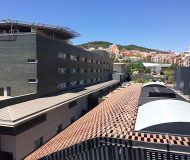

The group Genomic Instability and DNA Repair of the IIB Sant Pau, coordinated by Dr. Jordi Surrallés, director of the Genetic Service of the Hospital de Sant Pau, participates in a clinical trial of gene therapy whose results have been published in the prestigious journal Nature Medicine. The participation of this research group has focused on leading the genetic studies necessary for the recruitment and follow-up of the patients participating in the clinical trial.
The multinational team of researchers has used genetically modified viruses as a vehicle to introduce a gene into stem cells extracted from the blood of patients affected by a serious genetic disease, Fanconi’s anemia, characterized by high chromosomic fragility.
Genetically-corrected cells have been re-introduced to patients as if it were a self-transplant but without danger of rejection, or risk of causing graft disease against the host and without using conditioning chemotherapy. Unlike conventional transplants with healthy stem cells that may involve months of hospitalization in sterile chambers, patients in this clinical trial have required only 2-3 days of hospitalization.
The team of Dr. Surrallés, has been responsible for diagnosing genetically the patients who have entered the clinical trial, using chromosomal techniques to determine their chromosomal fragility, and mass-sequencing techniques of new generation of exons to determine the mutated gene and specific mutation of each patient. Only patients with mutations in the FANCA gene have been recruited in this trial.
The researchers have been able to see how genetically corrected cells are able to repopulate the marrow, cause a decrease in chromosomal fragility and stop the progression of anemia in different patients.
Reference article
Successful Engraftment of Gene Corrected Hematopoietic Stem Cells in Non-conditioned Fanconi Anemia Patients. Paula Río et al. Nature Medicine. 9th Sept. 2019. DOI: 10.1038/s41591-019-0550-z